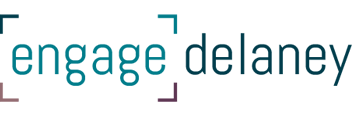Three Techniques We Loved in 2015 and How They Could Change in 2016
 The new International Association of Public Participation (IAP2) techniques training manual includes techniques mash-up as an engagement method. Essentially this means combining two or more techniques to achieve the results you need from your engagement. Engagement and facilitation professionals do this intuitively and regularly, so it’s nice to see IAP2 include it. In this post we look at three techniques we loved in 2015 and how they might change or evolve in 2016.
The new International Association of Public Participation (IAP2) techniques training manual includes techniques mash-up as an engagement method. Essentially this means combining two or more techniques to achieve the results you need from your engagement. Engagement and facilitation professionals do this intuitively and regularly, so it’s nice to see IAP2 include it. In this post we look at three techniques we loved in 2015 and how they might change or evolve in 2016.
The Opportunity Tree (adapted from Malcolm O’Dell):
This year we’ve used the opportunity tree technique as an approach to helping organizations develop their strategic plans. From hospitals to libraries, we’ve used this approach to:
- Brainstorm the roots to an organization’s success (the yellow stickies)
- Brainstorm the trunk or core of their organization such as their vision or core purpose (orange stickies)
- Brainstorm the leaves or results (or indicators) of their success (the green stickies)
The results of using this technique have been impressive and we believe this is, in part, due to the fact that visualizing a tree and understanding the roots, trunk and leaves is fairly intuitive for most people.
How it might change in 2016?
In 2015, we used this technique with senior managers or decision makers in organizations as part of a strategic planning processes. In 2016, we also see opportunities to engage external stakeholders - asking the questions slightly differently. For example, we can envision asking recreation users at a community centre, “If this was the best community centre ever what would it look like?” The results could form the leaves of the community centre’s key performance indicators or indicators of success.
World Café + Dot Voting
An old favourite of mine is a World Café followed up with Dot Voting. Ideas generated during the World Café are then voted on by participants to determine priorities. We’ve used this technique mash-up with internal and external stakeholders, and everyone seems to appreciate the visual effect and transparency of the results. What’s more, people like being able to have a conversation as they vote – so perhaps it’s more like World Café, Gallery Walk and then Dot Voting.
How it might change in 2016?
We used this technique mashup in 2015, in person, but in 2016 we are thinking about how we might bring the mashup online or at least a component of it. For example, we are thinking we could bring the results from the World Café to an online survey and have a broader group of stakeholders participate in the voting process. We are thinking of clustering ideas or concepts generated from the World Café and then giving them unique hashtags and having a broader participant or stakeholder group tweet their feedback using the specific hashtags.
Advisory Groups
At the level on the IAP2 spectrum of collaborate or empower, we regularly use the engagement technique of advisory groups. They are a significant amount of effort and resources, but really provide a unique opportunity for organizations to harness the energy and commitment of stakeholders in a productive way. For us, the most important elements of this technique are:
- Detailed terms of reference
- Membership selection criteria
- Advisory group support (for minutes, preparing agendas and materials, etc.)
Without any one of those three, advisory groups can be ineffective and, frankly, painful experiences for both the organization and stakeholders.
How it might change in 2016?
The barrier to participation with advisory groups is the time and location-specific requirement. While there are lots of tools available to support virtual meetings of advisory groups, clients still prefer and expect advisory group meetings to take place in person. This is a barrier to many stakeholders – from the travelling business woman, to the stay at home dad. So, while there’s nothing ground breaking here, we really hope that in 2016 there’s more use of Skype, GotoMeeting, SharePoint and other tools to support and give confidence to clients that virtual advisory group meetings count, they’re legit and should be more the norm than the exception.
In 2016, consider mashing up techniques, doing things differently and engaging people where they’re at, be it online or in-person.






